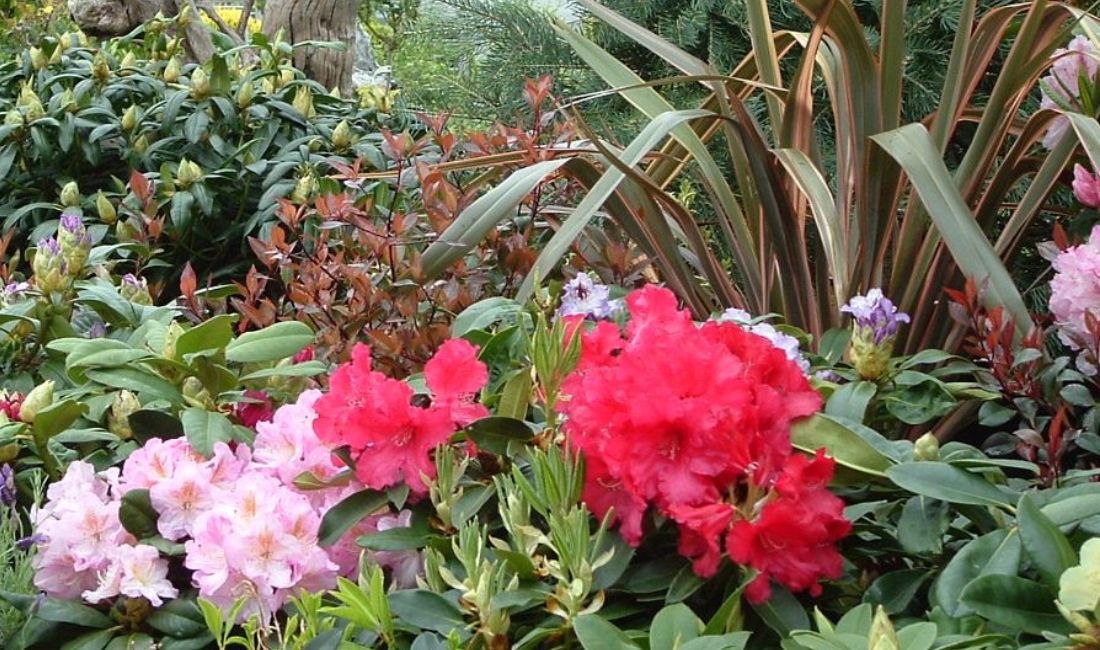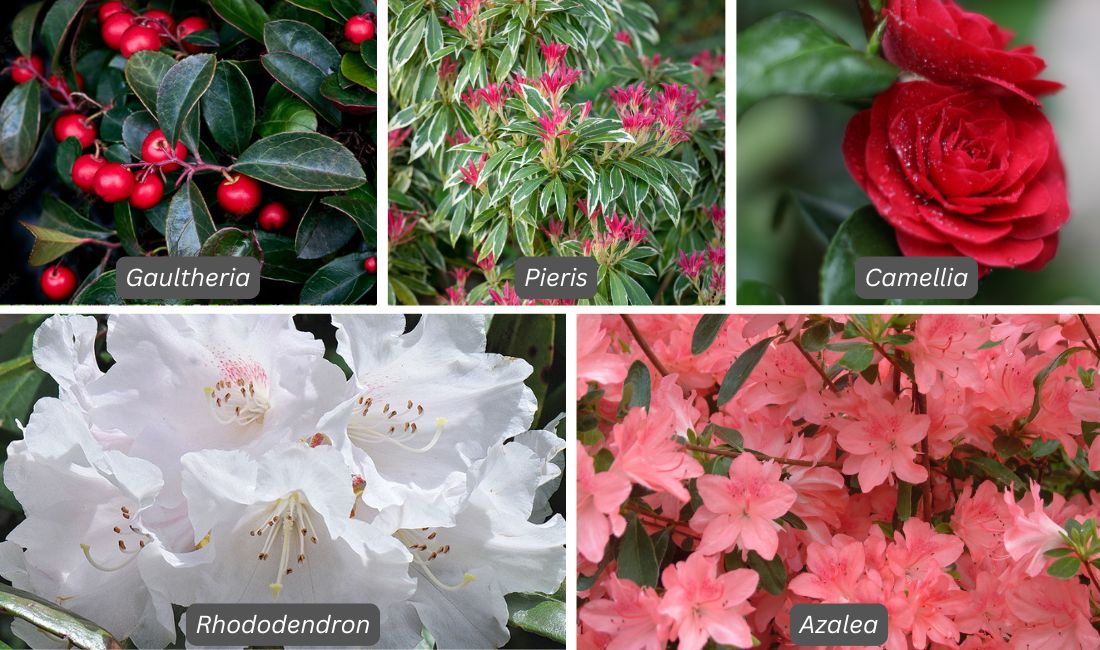
Ericaceous plants are a group of plants that thrive in acidic soils and are often referred to as ‘acid-loving’ plants. They include many of the classic popular spring flowering shrubs such as Camellia, Rhododendron and Azalea.
To thrive, these plants require an acidic soil with a pH of approximately 6.5 or lower – without which they are unable to fully absorb essential nutrients such as iron and manganese and other minerals. Soils with a pH of 7 or above are considered alkaline.
Soil pH can easily be tested using readily available soil testing kits or soil meters. Alternatively, just look at what’s thriving in your neighbours’ gardens and around the area, particularly in springtime. If acid loving plants such as Rhododendron and Camellia are thriving in the ground in nearby gardens and parks, there’s a good chance that you’ve also got acidic soil!
Caring for Ericaceous Plants
If you don’t have acidic soil in your garden you can still grow acid-loving plants, but it’s advisable to grow them in pots or raised beds so that you can control the acidity by using ericaceous potting compost - such as the peat-free SylvaGrow® Ericaceous compost sold at Clifton Nurseries.
As with most garden plants, we recommend feeding all ericaceous plants in the spring – but be sure to use specialised plant food designed for ericaceous plants as plants thriving in acidic conditions need specific nutrients that are often not readily available in standard plant food. As most ericaceous plants start to develop flower buds in the summer for the following spring, we also recommend feeding them late summer/early autumn. Our friendly team are always happy to advise on the best plant food for your requirements.
To care for the developing flower buds it’s important to water ericaceous plants over the summer. As with all plants in containers, any ericaceous plants in containers should be watered regularly – but those planted in the ground will also need summer watering, preferably with rainwater (if available).
Applying mulch around the plants helps retain moisture, suppress weeds and regulate soil temperature – but as with all plant care for ericaceous plants be sure to use lime-free versions of mulch such as pine bark, leaf mold or compost.
Many ericaceous plants have numerous large flowers so, if possible, you may wish to deadhead them after the flowers have finished - not just to tidy up the plant, but also to encourage new bud development.
Don’t be put off by the specialist care guidelines for ericaceous plants! They are definitely not difficult to care for, they just require the right type of plant food and compost for promoting their growth in acidic conditions.
Our Favourites
Ericaceous plants requiring acidic soil include Rhododendrons, Azaleas, Pieris, Camellias, Heathers, Gaultheria, Blueberries, Leucothoe, Magnolias, Trilliums and Ceanothus, as well as many others ….. but there are a few clear favourites.
Rhododendron – impossible to miss when in full bloom, Rhododendron have spectacular large spring flowers flowering in a range of colours including pink, white, red and purple. Tough and hardy, they prefer woodland type conditions of dappled shade and moist humus-rich acidic soil. Be sure to check the variety you purchase as they range in size from small to very large!
Azalea – in the same plant family as Rhododendron, Azalea tend to be smaller with smaller leaves and flowers - but while their spring flowers may be smaller they are often prolific, totally covering the plant in a range of vibrant colours including pink, white, red, purple, salmon, orange and yellow. For those without acidic soil, Azalea can be grown in containers with ericaceous compost. They tolerate shade but grow in pretty much any conditions. Ideal for a blast of colour in the spring!
Pieris (Lily of the Valley) – slow growing evergreen shrub with attractive foliage and beautiful spring flowers. Glossy green narrow leaves are often orangey or red when young, maturing to green, as with the popular variety Pieris japonica Forest Flame. Clusters of small, scented, urn-shaped white flowers are borne at the tips of the stems in spring. Some varieties have variegated leaves. Low maintenance, prefers sun or light shade.
Camellia – a classic flowering shrub that no garden with acidic soil should be without! Glossy leaved evergreens with showy flowers in pinks, whites or reds, some with double flowers, other with single. Camellia sasanqua varieties flower in autumn and through winter, while the more readily available Camellia japonica varieties flower in spring. Can be grown in containers as well as in the ground.
Gaultheria – low-growing evergreen shrub much loved for autumn and winter berries in shades of pink, red or white, depending on the variety – with the berries also enjoyed by birds and wildlife. Green rounded leaves turn slightly reddish in winter adding to the colour. Thrives in shade so ideal for brightening up a dark corner.

Clifton Nurseries Garden Centre
London, W9 2PH
Click here for our Christmas trading hours
0207 432 1867
Monday – Saturday 9am-5:30pm, Sunday 10.30am-4.30pm
Clifton Nurseries Garden Services
London, W9 2PX
